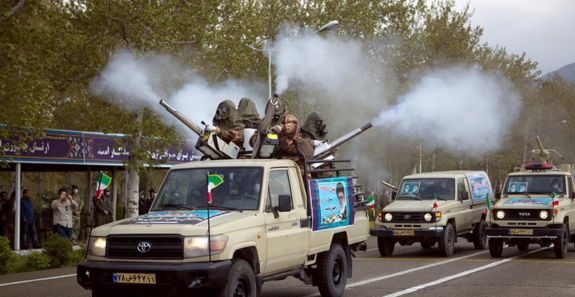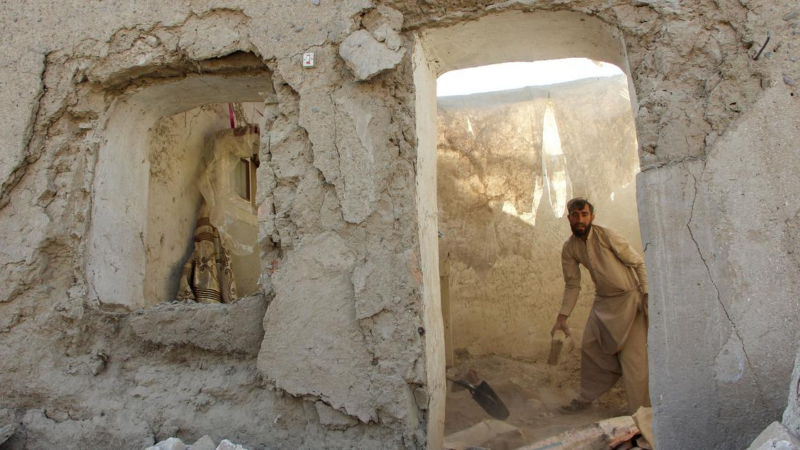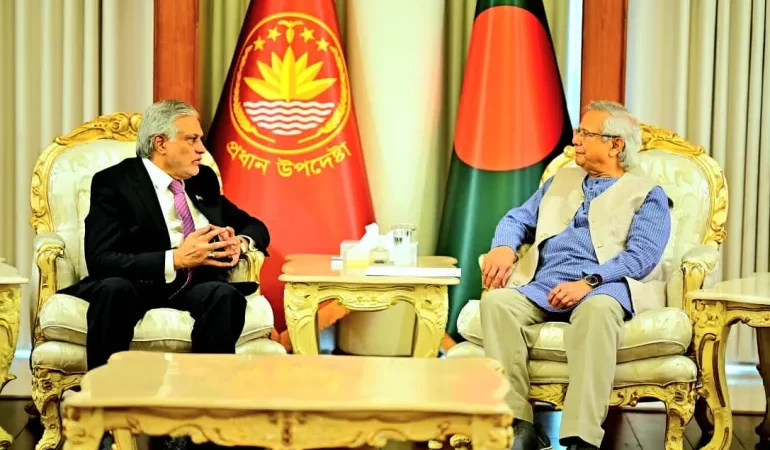US-Iran war of words raises fresh fears of Gulf clash

Last year, President Donald Trump in a speech stated that America’s revolutionary army back in the 1770s “took over the airports” from the British.
So in this light, his tweet on Wednesday that called on US Navy commanders to “shoot down” Iranian gunboats that harass US warships was only a minor mis-statement.
But it was certainly the strongest threat of direct military action from the US since earlier this year, in the wake of the US killing in Iraq of a top Iranian Islamic Revolution Guard Corps (IRGC) commander, General Qasem Soleimani.
That brought the US and Iran close to a significant conflict. So what prompted President Trump’s warning now? And why, with both Iran and the US struggling to cope with the Covid-19 pandemic, has there been this return to stoking tensions?
The immediate reason for President Trump’s terse message was an episode last week, when several armed speedboats operated by the IRGC Navy, harassed – the US says – a passing flotilla of US warships in the Gulf.
These vessels included the USS Lewis B Puller, an expeditionary mobile base vessel, and the destroyer, the USS Paul Hamilton.
The US Navy says that in one incident an Iranian gunboat crossed some 10 yards (9m) in front of a US Coast Guard cutter at high speed.
The IRGC admitted that there had been an encounter, but blamed the Americans.
Its commander-in-chief, Gen Hossein Salami, said on Thursday that he had ordered Iran’s naval forces “to destroy any American terrorist force in the Persian Gulf”, as he put it, “that threatens the security of Iran’s military or civilian shipping”.
The fear now is that hostile manoeuvring and a war of words could turn into actions.
Nonetheless, President Trump’s “order” on Twitter changes little.
The commanders of US warships in the Gulf already have the ability to take whatever measures they believe are necessary to protect the lives of their crews and the safety of their vessels.
They are well used to the swarming tactics of small Iranian boats.
- Iran warns US Navy over Gulf incident
- Clues from beyond the grave into Iran’s death toll
- US-Iran relations: A brief history
But this episode shows that for all the global attention on the pandemic, pre-existing international tensions have not gone away. They may even have been exacerbated.
That is because the US and Iran have consistent strategic goals with regard to each other which have not changed. Iran wants to reduce US influence in the region and to expand its own footprint.
A recent uptick in Israeli air strikes in Syria, for example, suggests that Iran and its allies are still actively pursuing this goal there.
Some of Iran’s leaders – and there is a danger that the chaos and uncertainty prompted by the Covid-19 crisis will simply strengthen hardliners – may feel that the US, given its own struggles at home, will have little enthusiasm for a set-to in the Gulf.
Equally, the Trump administration is doubling down on its policy of “maximum pressure” on Iran, seemingly in the belief – not shared by the vast majority of regional experts that I have listened to – that the pandemic could ultimately prompt the collapse of the Islamic regime in Tehran.
Its launch on Wednesday of what the IRGC claimed to be a military satellite, using a rocket that appears to rely upon North Korean technology, indicates that its missile programme is continuing to improve.
And while Iran nominally remains within a 2015 agreement with world powers that limited its nuclear activities, it is in breach of many of its terms.
Indeed, experts worry that, while many of the steps taken by Tehran are reversible, it may be moving to a position where it can manufacture carbon fibre centrifuges – the essential machinery for uranium enrichment – in a clandestine way, beyond international inspection.
The US-Iran tensions might matter less if they had been temporarily put on the back-burner. But they clearly have not.
And the risk of an accidental conflict erupting remains as great as ever; perhaps more so given that each may be misunderstanding the impact of the coronavirus pandemic upon the other’s capacity for action.






